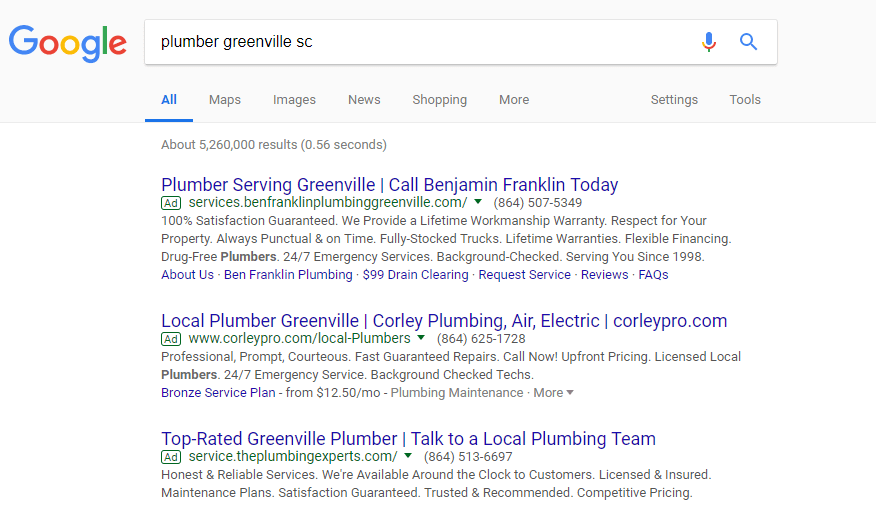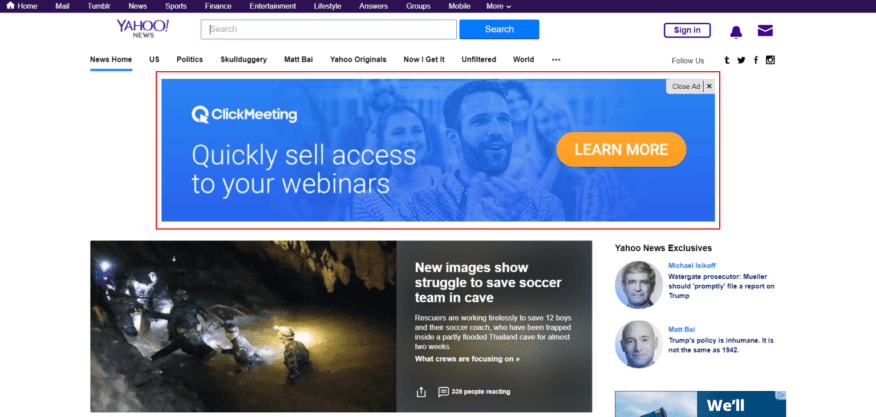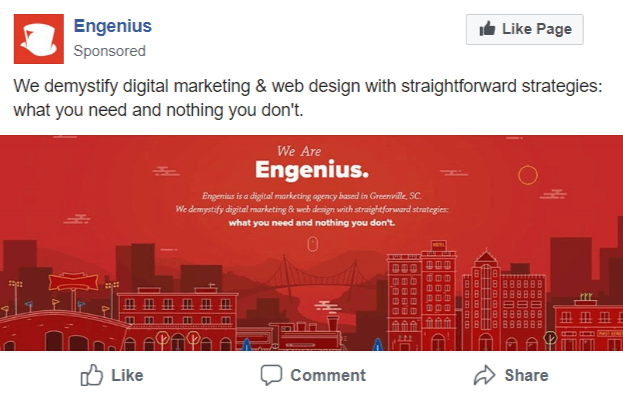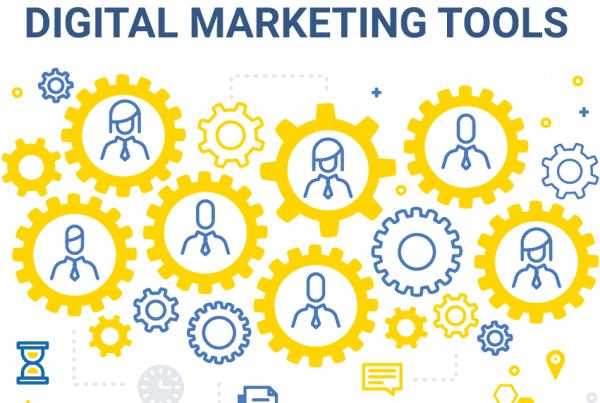Digital Advertising vs. Traditional Advertising
These days, we’re inundated with advertising messages. Everywhere we look something is sponsored by a brand trying to get their name out there. So how are you supposed to get your business noticed? For small businesses especially, advertising can feel overwhelming. If you’re feeling overloaded by the sheer number of advertising methods there are (or maybe a bit sticker-shocked by the prices) then digital advertising might be a good solution for you. Note: digital advertising is not the same thing as organic search engine ranking.
What is Digital Advertising?
Digital advertising is purchasing ad space for your business somewhere on the internet. That could mean Google ads, display ads, Facebook ads, or other websites. Unlike traditional advertising though, digital advertising is highly targeted, measurable, and affordable.
Best of all? Digital advertising is flexible. If you simply want your name out there on the internet in as many places as possible, there’s a digital advertising method for that. Or if you’re more focused on increasing one-on-one interactions with your target audience via social media, there’s a digital advertising method for that too.
Don’t be fooled: some marketers will have you believe that you need to advertise on every single platform and spend as much money as possible to make your mark.
That couldn’t be further from the truth.
There’s no one-size-fits-all digital advertising platform. To determine which one is right for you, you simply need to consider your overall marketing goals. And while you’re at it, you may need to hire a team of skilled marketers to help. Find out what marketing skills are most essential.
Marketing Goal #1:
Generate Awareness/Exposure for Your Product or Business
We often hear from business owners who are simply concerned with “being seen.” Whether you’re a new business, you’re trying to break into a new market, or you just want more people to know you’re out there, gaining exposure is a common marketing objective.
Thankfully, digital advertising makes exposure more measurable than other advertising tactics. If you advertise with a billboard on a highly trafficked highway, you can make educated guesses about how many people actually see your ad each day, week, or month.
But with digital advertising, you can see exactly how many people see your ads on a regular basis. From there, you can determine which channels are garnering the most exposure for your brand.
If you’re considering digital advertising for awareness and exposure, the following channels can help you meet your goals.
Google Ads: Search Network & Display Network
It’s safe to say that Google is the first medium that comes to mind if you’re thinking about digital advertising. Rightfully so—Google is a clear leader in this area, generating over 3.5 billion searches each day. If you want to attract a user to your website, it’s in your best interest to invest some digital advertising dollars into Google Ads.
There are two types of Google Ads you need to focus on if your goal is more brand exposure and awareness:
- Text advertisements that appear at the top of search results (“search network ads”)

- Graphic advertisements that show up in the sidebars or header areas of other websites (“display network ads”).

For a full rundown on how Google Ads works, check out this article. But in a nutshell, search network ads allow advertisers to bid on keywords relevant to their product or service. Those ads can then appear at the top of all organic search results.
Let’s say you’ve recently opened a French restaurant in your city. With search network ads, you can ensure your website’s search result shows up near the top of the page when people in your area search for “French food” or “French restaurants.”
As long as you’ve done some keyword research to make sure people are actually searching for the terms you’re bidding on, you’ll begin generating more exposure right off the bat for your new restaurant.
Display network ads function a little differently. You can target specific keywords, but you can also have your business’ ads show up on Google partner websites that are relevant to your target audience.
For example, if you know your target audience is interested in food and local events, you can choose to advertise on food-related websites and on websites that might contain information on your city’s events (news outlets, for example).
Whether you advertise on Google’s search network or display network, you’re sure to generate more exposure for your business in no time.
Facebook Awareness Ads
Speaking of digital giants, in 2024 Facebook boasts over 2.09 billion daily users. Statistics like this make it clear that the social network isn’t just for cat GIFs and baby pictures—Facebook is officially too big to ignore when it comes to digital advertising.
Facebook has a robust set of advertising tools. While there are 11 different types of ad objective to choose from, you want to focus on objectives for increasing awareness are “brand awareness” and “reach.”
With either of these objectives, Facebook will show your ads to as many people as possible who meet your targeting specifications.

An example of a Facebook ad using the “reach” objective.
If you want more people in your area to know about your new restaurant, for example, you can choose to show your ads to people in a certain ZIP code or within a certain radius around your city. If you want to get more specific, you can target age, gender, parental status, and more.
Marketing Goal #2:
Drive More Traffic to Your Website
Perhaps you’re a more established business and instead of educating the public about your company, you want to take your digital advertising efforts a step further. In this case, you can lead your target audience deeper into the buying funnel by focusing on clicks to your website.
Getting users to click on your website is the first step in getting them to become actual customers. If that’s your goal, the following platforms can help you get there.
Google Ads: Search Network
Google’s search network ads are best for driving traffic to your website, since 81% of buyers are conducting research on Google. The search network ads allow you to get your business in front of consumers when it really matters. Just make sure you’re monitoring your progress and taking note of the most important ad metrics.
Facebook Traffic Ads
If your goal is to get more clicks to your website, Facebook has a campaign objective designed to do just that: “traffic.” With this objective, Facebook shows your ads to the people it thinks are most likely to click through to visit your website. These ads are equipped with call to action buttons to encourage users to visit your site.

Marketing Goal #3:
Get More People Talking About and Engaging with Your Brand
Social media offers brands a unique opportunity to interact with people all over the world. But the world of social media is so big. How do you even know where to begin? And even if you are posting on social media, aren’t there algorithms that prevent people from seeing everything you have to say?
First of all, yes: social media networks do use algorithms that might prevent all of your followers from actually seeing what you post. Luckily, digital advertising provides a workaround. Most social networks allow brands to promote posts to help guarantee visibility and get users engaging with their business.
If you want to foster more interaction with your target audience, engagement ads are the perfect option for you. Now you just need to ask yourself: where is my target audience spending time?
Facebook Engagement Ads
Whether you realize it or not, you’re probably familiar with Facebook’s engagement ads. These ads look similar to the regular posts you see on your timeline. They aren’t focused on getting you to visit a website or purchase a product. Often, they’re lighthearted, funny, or conversation-starting. And if your business has a Facebook page, you can create ads just like these.
By selecting the “engagement” objective on Facebook (or by “boosting a post”) you can increase the number of reactions and comments your post receives.
It’s important to note this is not the same as buying likes or followers. In those cases, you’re paying for spam bots whose accounts will eventually be deleted.
With Facebook’s engagement objective, you’re paying to have your post shown to people who meet your targeting objectives and are, therefore, more likely to engage with your business.
But before jumping into Facebook’s engagement ads, consider this: is your audience really on Facebook? Sure, it’s the most widely used platform, but that doesn’t mean that’s where your target audience is.
Instagram Ads
Facebook owns Instagram, which means that you can link your business’ Facebook account with your Instagram account and display your ads on both platforms simultaneously.
Instagram uses an algorithm to determine which posts it shows above others and these ads look like something that one of your friends might’ve posted—and that’s exactly what businesses want. Engagement advertisements help you cut through the clutter and engage with your target audience.
Before jumping into Instagram’s engagement ads, consider this: is your brand highly visual? Instagram is a great option for businesses with eye-catching content. Secondly, Instagram is smaller than Facebook, so you should be prepared to offer a more personal experience for users who are used to businesses responding to comments and messages.
LinkedIn Ads
LinkedIn is a perfect solution for businesses who want to engage with potential customers about technical and industry-specific content.
For example, as a restaurant owner, you gear most marketing efforts towards getting people to make reservations. But maybe you are speaking at a national conference for chefs and restaurateurs and you want to engage with others who might be interested in your topic: enter LinkedIn advertising.
With its unmatched professional targeting options, LinkedIn allows you to get your work-related content in front of people who care most. You can choose your audience based on degree, company name, job title, and more.
So Which Digital Advertising Platform Should You Choose?
As you can see, digital advertising platforms are easy to come by these days. And most of them make it even easier to create an ad and start spending money. While this is great for entrepreneurs who want a no-frills way to promote their business, it can end up being detrimental in the long run. Why? Because it’s just as easy to waste your money on advertising if you aren’t sure what you’re doing.
Before spending a dime it’s critical to know why you want to advertise and who you are advertising to. Only then can you effectively evaluate the strengths and weaknesses of each platform so that you can spend your money in the right place and get the best return on your investment.
Still unsure of which advertising platform is right for your business? Confused by the differences between the Search and Display network? We have a wealth of resources on how you can advertise online, and if that isn’t enough our team is always happy to talk about possible solutions to the problems you face!
Start the Conversation
Interested in learning more about how we can maximize your digital advertising?



